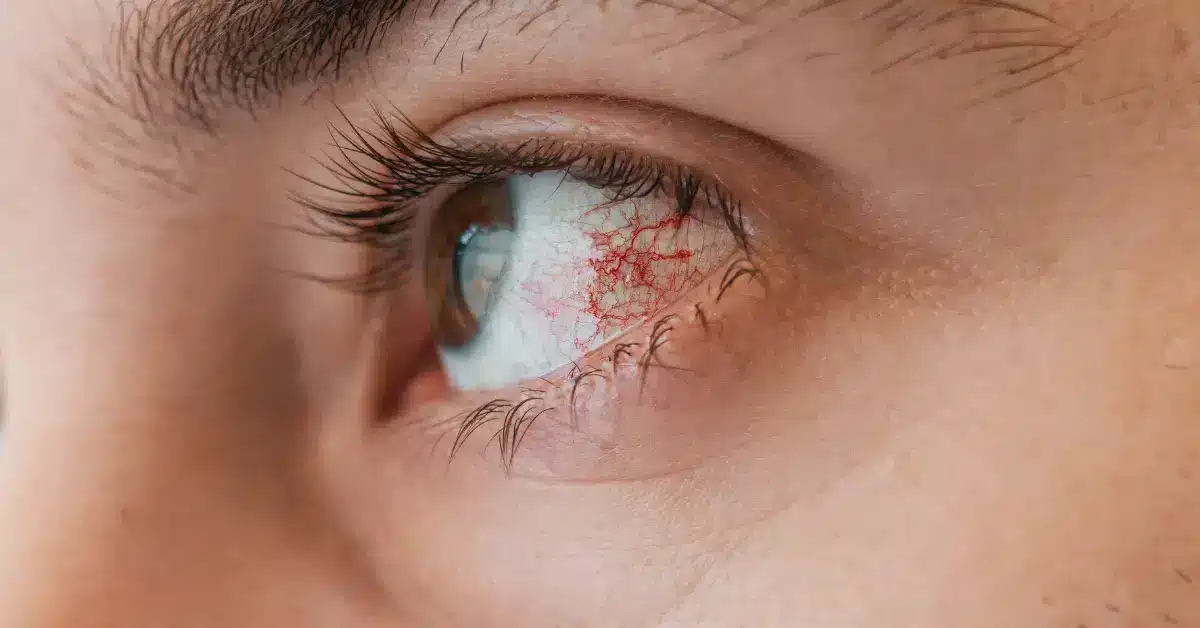Punctate Keratitis: Everything You Need to Know
Punctate Keratitis is a rare eye disorder that damages the cells of the cornea’s outer layer (Epithelium).
The disease appears as scattered areas of loss of epithelium from the cornea.
The condition, however, is benign and mostly heals within three weeks.
Superficial Punctate Keratitis refers to the damage only on the cornea’s surface.
Read the article to know more about Punctate Keratitis, its symptoms, causes, and treatments you can take for it.
Thygeson’s Superficial Punctate Keratitis

As the word superficial suggests, the disease is not invasive and affects only the surface area.
E. Fuchs first introduced Superficial Punctate Keratitis in 1889 for the small dot-like changes he observed in the eye’s outer layer.
The eye disorder causes the death of small clusters of cells on the cornea’s outermost layer called the epithelium.
The condition is not severe, and in most cases, recovery occurs within three weeks.
Thygeson’s Superficial Punctate Keratitis (TSPK) is, however, the term indicating a broad group of corneal epithelial damage in both eyes.
It is a chronic condition with episodes of exacerbations and remission spanning over the years to decades.
Causes
It is still unclear what exactly causes TSPK.
However, viral or immune mechanisms are some suggested causes of this condition.
Some other causes of Superficial Punctate Keratitis include,
- Bacterial infection
- Dry eyes
- Blepharitis
- Contaminated water or chemicals
- Certain medication
Symptoms
A variety of conditions can cause Superficial Punctate Keratitis. Symptoms also vary depending on these causes.
Usually, these symptoms are minimal, including eye discomforts such as,
- Eye pain
- Burning
- Excessive tearing
- Irritation
- Light sensitivity
- Foreign body sensation
Occasionally, visual acuity is affected in some patients.
During inactive stages of SPK, lesions can be flat and have gray dots that can appear star-shaped.
Conjunctiva may appear mildly red or pink and swollen.
Treatments

Usually, people recover fully from Superficial Punctate Keratitis.
Treatments depend on the cause of the condition. But, usually, topical corticosteroids are recommended to heal the eye.
If dry eyes, sunlight, contact lenses, or irritants are the causes of the condition, it is treated with eye drops.
If the disease is caused by bacteria, your doctor will suggest antibiotics.
Occasionally, lubricant eye drops may help relieve the symptoms.
Soft contact lenses are postulated to improve symptoms by improving the optical quality of the cornea and also covering the elevated corneal lesions and nerves.
Nerves are constantly in friction with the conjunctiva during blinking; soft contact lenses protect the cornea from friction and, thus, from further damage.
If you have TSPK, then these treatments are not that successful, though.
Antibiotics have not been effective so far, and even antiviral medicines have shown mixed results.
However, Trifluridine therapy has shown mild improvements in the condition.
SPK is treatable and heals within three weeks while TSPK is a chronic condition taking over years to heal completely.
Also the treatments are different. Thus it is advisable to consult your doctor before taking medications.
Takeaway
In conclusion, Superficial Punctate Keratitis is a rare and benign condition.
You can take topical treatments, such as eye drops, to help relieve the eye discomfort caused by SPK.
However, consult your doctor before taking any medication, as the treatment depends on what causes this condition.
In most cases, topical corticosteroids are helpful in healing the disease.
If you have Thygeson’s SPK, a chronic condition, it may take years to recover.
Speak with your doctor for more information about the condition and its treatments.
Frequently Asked Questions
How do you get Punctate Keratitis?
You can develop Punctate Keratitis from various factors, including dry eyes and viral or bacterial infection. Exposure to UV rays from sunlight, sunlamps, or welding arcs is also a cause of this condition.
How long does superficial punctate keratitis take to heal?
Recovery time depends on the cause of the condition. When UV light is the cause of SPK, then the condition lasts for one or two days. When the cause is a virus, recovery will take up to three weeks without any treatments. In general, the disease heals within three weeks.
Is Punctate Keratitis chronic?
In most cases, the condition is mild and heals within three weeks. However, in some cases, damage to epithelial cells can be severe. In such cases, the disorder can span from years to several decades. This chronic condition is referred to as Thygeson’s Superficial Punctate Keratitis.
WowRx uses only high-quality sources while writing our articles. Please read our content information policy to know more about how we keep our content reliable and trustworthy.






